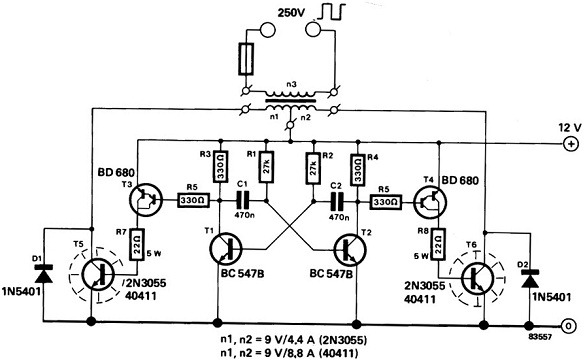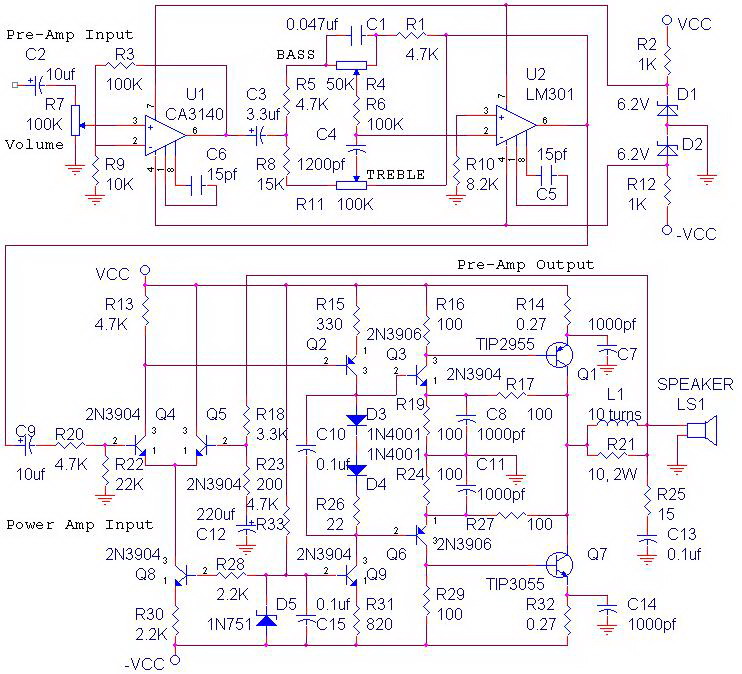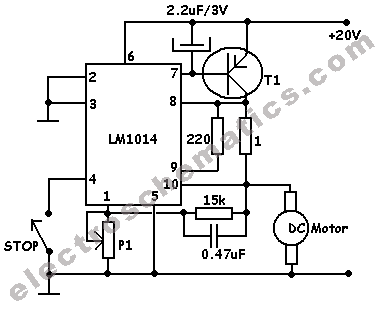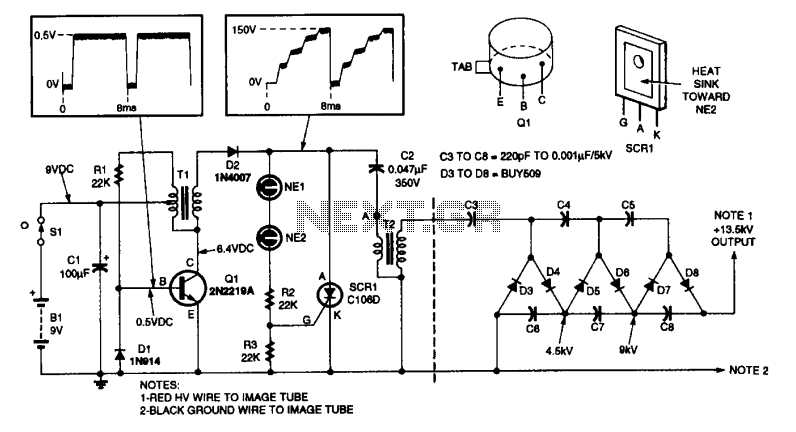
12V Battery to 220V Power Inverter charge controller

A power inverter converts direct current (DC) power to standard alternating current (AC) power. The following schematic illustrates a 12V power inverter circuit diagram.
The 12V power inverter circuit typically consists of several key components that work together to achieve the conversion from DC to AC. At its core, the inverter employs a switching mechanism, often utilizing transistors or MOSFETs, to rapidly switch the DC voltage on and off. This switching creates a square wave output, which can then be transformed into a sine wave using additional filtering and modulation techniques.
The circuit begins with a DC power source, commonly a 12V battery. This voltage is fed into an oscillator circuit, which generates a high-frequency signal. The oscillator can be implemented using a 555 timer IC or a microcontroller, depending on the desired complexity and features of the inverter.
Next, the output from the oscillator drives the gates of the transistors or MOSFETs. These components act as switches, turning on and off in response to the oscillator's signal. The switching creates a pulsed output, which is then passed through a transformer. The transformer serves two primary functions: it steps up the voltage to the desired AC level (typically 120V or 230V, depending on the application) and provides electrical isolation between the input and output.
After the transformer, the output may still exhibit a square wave form. To convert this square wave into a more usable sine wave, additional filtering components, such as capacitors and inductors, are employed. These components smooth out the output waveform, reducing harmonic distortion and improving the quality of the AC signal.
Finally, the output can be connected to standard AC loads, enabling the use of household appliances and other devices that require AC power. Safety features, such as fuses or circuit breakers, may also be incorporated into the design to protect against overloads and short circuits, ensuring reliable operation of the inverter.A power inverter converts DC power or direct current to standard AC power or alternating current. The following schematic shows a 12V power inverter Circuit Diagram. 🔗 External reference
The 12V power inverter circuit typically consists of several key components that work together to achieve the conversion from DC to AC. At its core, the inverter employs a switching mechanism, often utilizing transistors or MOSFETs, to rapidly switch the DC voltage on and off. This switching creates a square wave output, which can then be transformed into a sine wave using additional filtering and modulation techniques.
The circuit begins with a DC power source, commonly a 12V battery. This voltage is fed into an oscillator circuit, which generates a high-frequency signal. The oscillator can be implemented using a 555 timer IC or a microcontroller, depending on the desired complexity and features of the inverter.
Next, the output from the oscillator drives the gates of the transistors or MOSFETs. These components act as switches, turning on and off in response to the oscillator's signal. The switching creates a pulsed output, which is then passed through a transformer. The transformer serves two primary functions: it steps up the voltage to the desired AC level (typically 120V or 230V, depending on the application) and provides electrical isolation between the input and output.
After the transformer, the output may still exhibit a square wave form. To convert this square wave into a more usable sine wave, additional filtering components, such as capacitors and inductors, are employed. These components smooth out the output waveform, reducing harmonic distortion and improving the quality of the AC signal.
Finally, the output can be connected to standard AC loads, enabling the use of household appliances and other devices that require AC power. Safety features, such as fuses or circuit breakers, may also be incorporated into the design to protect against overloads and short circuits, ensuring reliable operation of the inverter.A power inverter converts DC power or direct current to standard AC power or alternating current. The following schematic shows a 12V power inverter Circuit Diagram. 🔗 External reference





